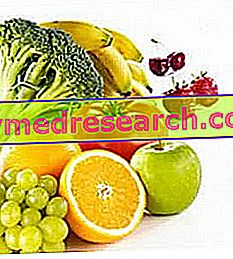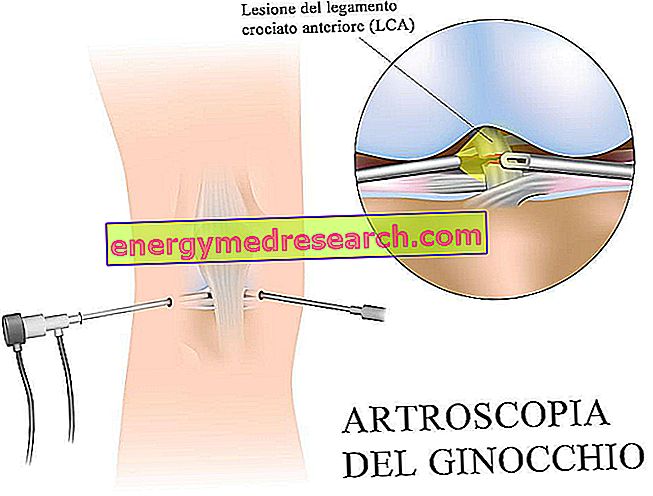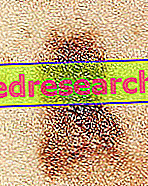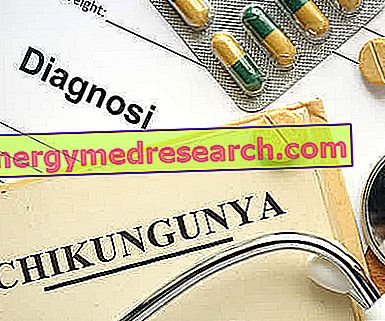Cholesterol in the diet represents about 1/3 of total blood cholesterol.
In foods, the cholesterol content is assessed overall, regardless of whether it is esterified, non-esterified or bound to a lipoprotein; on the contrary, in our organism what most influences the state of health is its METABOLISM, that is the quantity and chemical nature of cholesterol transport lipoproteins.
Lipoproteins

- chylomicrons,
- Very Low Density Lipoprotein (VLDL),
- Intermediate Density Lipoprotein (IDL or remnant),
- LDL (Low Density Lipoprotein)
- High Density Lipoprotein (HDL).
HDL lipoproteins are responsible for the transport of cholesterol from the peripheries to the liver, performing an atherosclerotic protection function; on the contrary, LDLs carry cholesterol from the liver to the tissues and their permanence in blood favors the storage of fat in the arteries, predisposing to atherosclerosis.
LIMITS OF LIPOPROTEINS:
- Total cholesterol <200 mg / dL
- LDL <130 mg / dL
- HDL man> 40 mg / dL
- HDL woman> 50 mg / dL
- OPTIMAL REPORT LDL / HDL = <3
Apart from genetics and familiarity, a person who has high total cholesterol or non-optimal LDL / HDL ratio, before starting a drug therapy, must necessarily intervene quickly on the diet.
Diet and Cholesterol
Cholesterol is a lipid contained in foods of animal origin; the foods that contain the most belong to the category
- of eggs (371mg / 100g),
- milk derivatives, especially butter (250mg / 100g), cream (43mg / dL) and aged cheeses (Fontina 82mg / 100g - Parmesan 91mg / 100g ...);
- of fatty meats and sausages (Lamb 70-80mg / 100g - Salami 80-100mg / 100g) and some offal (Liver Bovine 191mg / 100g).
Importance of saturated and unsaturated fats
In addition to the amount of total cholesterol, saturated fats and hydrogenated fats (trans-) contribute significantly to the increase in total cholesterol (and LDL). This occurs because of their negative influence on the expression of LDL uptake receptors, which consequently tend to accumulate.
On the contrary, the prevalence in the diet of unsaturated polyunsaturated fatty acids (but also of monounsaturated omega 9 / oleic acid) promotes the removal of LDL and increases the HDL fraction.
- This translates into the need for
- limit the consumption of animal fats (such as butter, lard, fat-rich meat cuts, and cheeses)
- minimize the consumption of hydrogenated vegetable fats (contained in many margarines and products that contain them, such as pastry ones)
- prefer the use of raw vegetable condiments, such as olive oil (to avoid palm oil and palm kernel oil), and consume at least three portions of fish per week.
Cholesterol absorption and bile salts
One of the individual factors that significantly affects cholesterol is represented by the ratio between cholesterol excreted with bile and that absorbed / reabsorbed by the intestine.
Dietary cholesterol is contained in fatty foods of animal origin; food lipids, to be digested and absorbed, must undergo emulsion by bile. The emulsifier of bile is composed largely of cholesterol deriving from the bloodstream. In the digestive tract, a part of this lipid emulsion (food + bile) is reabsorbed and cholesterol with it; the intestinal capacity to reabsorb cholesterol determines one of the subjective factors that affect cholesterolemia.
Importance of fiber and phytosterols
This process can also be modified with power; some dietary components, such as soluble dietary fiber (contained above all in vegetables and fruit), phytosterols (plant sterols) and lecithin (contained above all in legumes), have the ability to gel the faeces and constrain cholesterol (together with acids fat) hindering absorption / re-absorption.
- This means that with every meal containing cholesterol it is necessary to associate fruit, vegetables and / or legumes in order to reduce intestinal uptake.
The subjects who undergo a cholesterol-lowering diet MUST still guarantee the supply of fiber, lecithin and phytosterols, since, if it is true that bile represents a route of excretion of circulating cholesterol (most of which is produced by the liver), by preventing it from being reabsorbed, total cholesterol levels can be further reduced.
Importance of antioxidants
Recall that the oxidation of LDL, caused by the excess of free radicals (smoke, alcohol, pollutants, etc.) and / or by the defect of antioxidants (lack of vitamins, polyphenols, etc.) and / or chronic metabolic inflammation (at which also contribute the type 2 diabetes with its relative blood proteinic glycation), determine a worsening of the cholesterol metabolism increasing the risk of atherosclerosis.
- This results in the need to maintain a high intake of antioxidants in the diet, thanks to the frequent consumption of fresh fruit and vegetables, possibly in season, limiting the sugary fruit especially in the presence of overweight or diabetes



